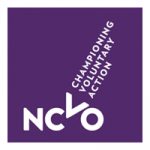On 27 – 30th October, our Equine Outreach team offered their services to 64 equines (34 donkeys, 20 mules and 10 horses) over a four-day trip on the island of Kea!
The island has a large number of working equines used in various types of work by the locals (transporting materials, tourism etc), and also several retired equines who live in fields. We had the opportunity to visit all the animals we treated last year, whose owners had asked for us to return, but also to visit animals we did not have time to include in our programme last year! The team had the opportunity to compare the equines’ conditions this year with last year’s.
Most of the island’s equines were in ideal body condition, with very few underweight. Our vet suggested treatment and advice on several health problems such as tendonitis, chronic lymphangitis, a hoof abscess, chronic laminitis and parasite prevention and treatment.
Many of the retired equines had long hooves due to no longer working and having a reduced movement in a field. Our farrier trimmed all these and offered relief to the animals, returning their movement back to normal. We found a great improvement in the serious condition of two donkeys – 12 year old Irene and 15 year old Sotiris, who, last year, were overweight and their hooves were severely deformed due to laminitis. This year the animals were in much better body condition, having lost weight; the feeding programme that we had recommended last year had been followed correctly and the condition of their hooves showed much improvement (less long and not deformed hooves). For two specific animals, it also proved very important that our dental technician visited the island. A 22-year-old donkey had a huge hook that was rubbing the soft tissue in the mouth and preventing normal chewing. It took a great effort to rasp the tooth down to normal shape, but the donkey can now chew normally and free from pain. The second case was a young horse with two very long hooks, which had recently suffered from an oesophageal obstruction. Having these hooks removed will help him chew normally again and significantly reduce the possibility of an oesophageal obstruction in the future.


The practice of hobbling (tethering two legs together) was encountered by the team, which is used widely on the island as a method of restricting animal movement. The team explained that this cruel practice is not acceptable, for welfare reasons and according to Greek legislation, and alternative methods were suggested, such as electric fencing. Our effort to eradicate hobbling faces additional difficulties on the island of Kea, not only because this practice is deeply rooted in the owners’ traditions and everyday life, but also due to the geology of the island, with lots of mountainous and steep areas which require extra effort and cost for installation of electric fencing. We are optimistic though, that in our future outreaches we will be able to spread the experience we have gained with our anti-hobbling project and convince owners to change their mentality and practices to improve their animals’ welfare.
Our team informed all owners of the recent Greek legislation on microchipping and registering equines; 15% of the equines seen were microchipped at their owners’ request, this way making a start on the island of Kea, to the obligatory procedure that should be made by all owners over a certain period.
We would like to thank the Municipality of Kea for contributing to the cost of the team’s accommodation, Eva Papadimitriou for the dinner she provided to our team, and to all the owners who offered their thanks and donations, which help us continue our programme. Special thanks to Giannis Mouzakis, who accompanied and guided the team throughout the island and helped our work in many ways. It was a demanding journey, both in organisation and implementation, with a lot of travel, as we visited 18 villages of the island, in less than ideal weather conditions, working until dark, but the satisfaction of the trip’s results made it all worth it!










